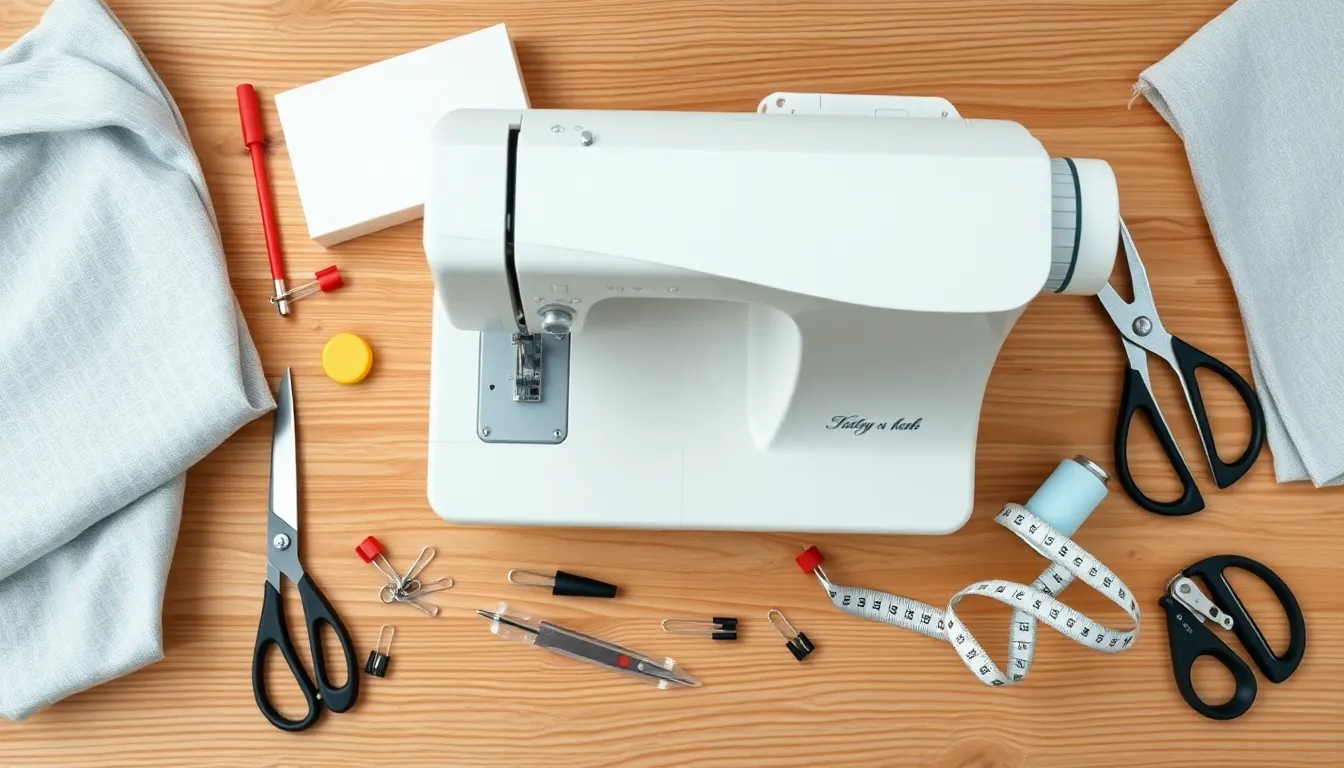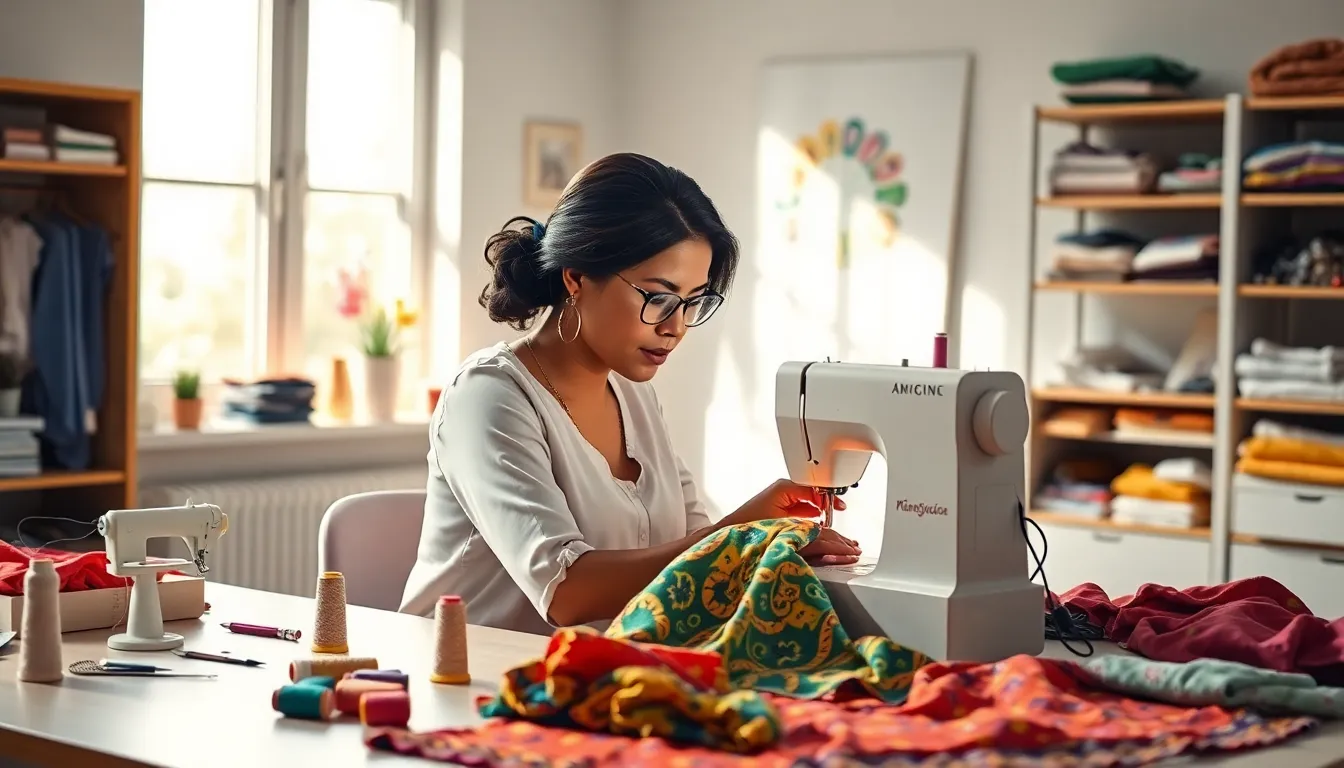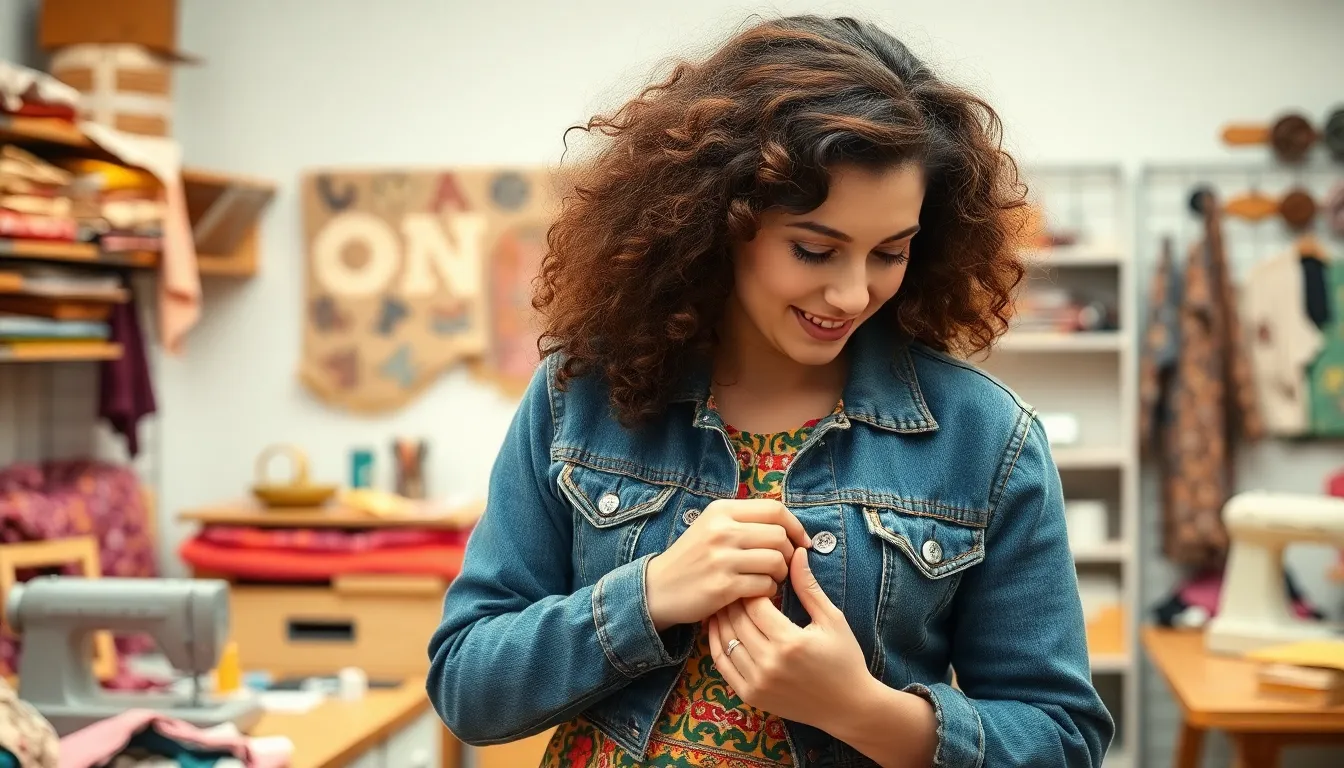In the world of fashion, sewing isn’t just a skill; it’s an art form that can transform a simple piece of fabric into a runway masterpiece. Imagine wielding your sewing machine like a wizard with a magic wand, conjuring up outfits that turn heads and drop jaws. Whether you’re a seasoned seamstress or a curious beginner, mastering a few fashion sewing techniques can elevate your wardrobe from drab to fab in no time.
Table of Contents
ToggleOverview of Fashion Sewing Techniques
Fashion sewing techniques encompass a variety of skills that enhance garment construction. Each method contributes to the overall quality and style of clothing. Techniques such as stitching, pattern drafting, and fabric manipulation play crucial roles in the design process.
Sewing techniques vary widely, catering to different fabric types and garment styles. For instance, straight stitching serves as the foundation for almost every seam, while zigzag stitching prevents fraying on raw edges. Understanding how to utilize these basic stitches is essential for any aspiring seamstress.
Fitting processes ensure garments conform to body shapes. Adjustments like dart placements and altering side seams improve overall fit. Techniques such as ease adjustment allow the designer to achieve comfort alongside aesthetics.
Finishing techniques enhance durability and presentation. Overlocking edges provides a clean finish, while bias binding adds decorative flair. Knowledge of these methods enables seamless transitions from raw fabric to polished garment.
Special techniques include pleating, gathering, and tucks. Each method can create visual interest and texture in a design. Mastering techniques like these allows for creativity and personalization in each sewing project.
Using tools such as rotary cutters and tailor’s chalk simplifies the sewing process. These tools assist in achieving precision in cuts and markings. Familiarity with essential equipment enhances efficiency and accuracy in garment construction.
Understanding fashion sewing techniques empowers sewists to transform fabric into unique pieces. Mastering these methods not only elevates personal style but also fosters craftsmanship in garment design.
Essential Tools for Fashion Sewing

Tools play a crucial role in sewing, affecting accuracy and quality. Having the right equipment ensures a smoother sewing experience.
Types of Sewing Machines
Sewing machines come in various types, tailored to specific sewing needs. Mechanical machines feature simple controls, offering reliability for beginners. Computerized machines provide advanced features, enabling intricate stitches and embroidery options. Overlock machines focus on finishing seams, preventing fraying and enhancing durability. Quilting machines often include specialized feet, designed for creating quilts with ease. Selecting the correct machine amplifies the sewing experience and expands creative possibilities.
Must-Have Sewing Supplies
Essential supplies facilitate successful sewing projects. Fabric scissors provide clean cuts, ensuring a professional finish. Rotary cutters excel in precision, suitable for cutting multiple layers. Tailor’s chalk helps mark patterns accurately, making adjustments straightforward. Pins and clips secure fabric layers, avoiding slippage during sewing. A measuring tape allows for accurate measurements, ensuring precise fitting. Thread comes in various colors and types, supporting diverse fabric choices. Gathering these supplies lays a solid foundation for successful sewing endeavors.
Basic Sewing Techniques
Understanding basic sewing techniques forms the foundation for effective garment creation. Mastering both hand and machine sewing opens a world of possibilities for any sewist.
Hand Stitching Techniques
Hand stitching techniques offer precision and control for finishing touches. Techniques like the running stitch are versatile for seams and hems. The backstitch provides added strength, suitable for areas facing stress. Slip stitches allow for invisible hems, enhancing the garment’s appearance. Mastery of techniques like the whip stitch can secure edges or adorn fabrics. Use varying thread weights to match the fabric type for optimal results. Each technique serves a unique purpose, allowing creativity to flourish.
Machine Sewing Techniques
Machine sewing techniques expedite the sewing process while maintaining quality. Straight stitching represents the foundation for most seams, ensuring durability. Zigzag stitching accommodates stretch fabrics, preventing fraying. Using a serger enhances edges and finishes quickly, providing a professional touch. Specialty stitches, such as decorative or embroidery options, allow for personalization and unique designs. Familiarity with machine settings ensures perfect tension and stitch length, which contribute to seamless construction. Each technique blends efficiency with creativity, streamlining the sewing project.
Advanced Fashion Sewing Techniques
Advanced fashion sewing techniques enhance garment quality and refine design. Mastering these techniques elevates sewing projects to new levels.
Tailoring Techniques
Tailoring techniques focus on achieving a perfect fit. Techniques like fitting adjustments, including dart manipulation and adjusting seam allowances, play crucial roles in garment structure. Layering fabric helps create shape, while techniques such as pad stitching and hand-sewn hems deliver professional-quality finishes. Understanding garment silhouettes enables sewists to create tailored pieces that flatter body shapes.
Draping and Pattern Making
Draping involves arranging fabric on a dress form to visualize garment structure. This technique aids in creating unique patterns tailored to specific designs. Pattern making translates draped designs into flat patterns suitable for sewing. Use of tools such as pattern paper and weights streamlines the process. Combining draping with pattern drafting allows designers to experiment with shapes and styles. These methods promote creativity while ensuring accuracy in garment construction.
Common Challenges in Fashion Sewing
Fashion sewing presents various challenges that can impede the creative process. Identifying common issues allows sewists to address them effectively.
Troubleshooting Sewing Issues
Sewing machine problems often arise, such as skipped stitches, which can disrupt progress. Uneven seams might result from incorrect tension or fabric feeding. Thread breaks frequently occur due to improper threading or using low-quality thread. Fabric puckering happens when stitch length is too short for the material. Stitch formation issues can stem from a dull needle or insufficient presser foot pressure. These problems require quick troubleshooting to maintain momentum.
Tips for Improving Techniques
Practicing consistent stitching helps enhance accuracy over time. Utilizing the right needle size and type for specific fabrics improves outcomes significantly. Regular maintenance of the sewing machine ensures optimal performance. Sewing with a consistent seam allowance aids in achieving uniform results. Experimenting with fabric samples boosts confidence and skills. Engaging in online tutorials or local workshops offers valuable insights and inspiration.
Mastering fashion sewing techniques opens up a world of creativity and craftsmanship. Whether one is a seasoned seamstress or just starting out the journey, these skills provide the tools needed to transform ideas into stunning garments. Embracing both basic and advanced methods not only enhances the quality of the finished piece but also fosters a deeper appreciation for the art of sewing.
With the right tools and a commitment to learning, anyone can elevate their sewing projects and bring unique visions to life. The joy of creating custom clothing is unmatched and encourages continuous exploration within the fashion sewing realm.




